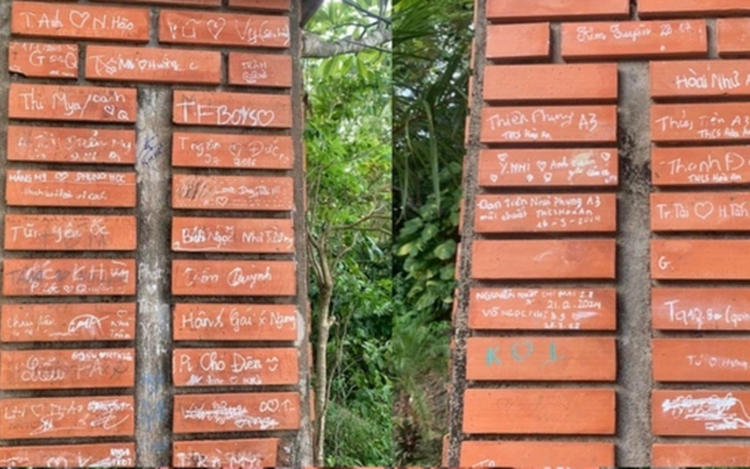
A corner of the Nhan Tower heritage site in Dak Lak Province, Vietnam defaced by visitors. Photo: Le Tan Thoi
It is not difficult to find spontaneous slogans, doodles, love symbols, and names carved or written on the stone walls, gate pillars, and corridors of the historic site.
Some of these writings include offensive language and inappropriate images, undermining the sacredness and aesthetic value of the site.
Such acts not only damage the visual appearance of the historic site but also erode its historical and cultural significance that should be preserved and respected.
Vandalism at heritage sites constitutes acts of cultural property destruction and legal violations.
Despite existing regulations, signs, and warnings urging visitors not to draw, write, or carve on walls, statues, or relics, and not to climb on architectural structures, many still ignore these rules.
Le Tan Thoi also recalled witnessing an elderly tourist in Khanh Hoa Province, south-central Vietnam, politely but firmly reminding two young visitors who were about to carve their names and a heart symbol into a rock face at a popular tourist site.
Although the pair initially reacted negatively, the visitor patiently explained the importance of preserving the site, and the young couple eventually abandoned their plan.
Uncivilized behavior at heritage sites not only harms the sites but also sets a poor example for others, especially children, who may begin to see such actions as acceptable and mimic them.
In reality, there are respectful ways to commemorate a visit to a heritage site, such as taking photos or writing reflections in a guestbook.
Relic sites and landscapes will continue to thrive when every individual learns to respect and care for them.
Thoi called on tourists to be responsible and cultured ones. If they cannot contribute to the beauty of a heritage site, at the very least, refrain from defacing or damaging it.


Max: 1500 characters
There are no comments yet. Be the first to comment.